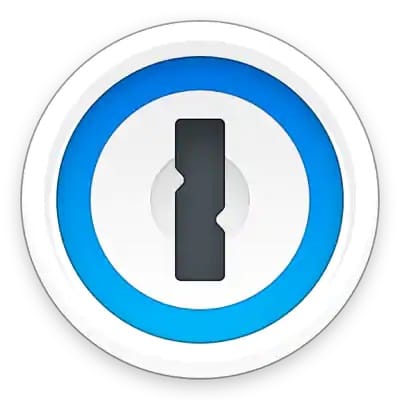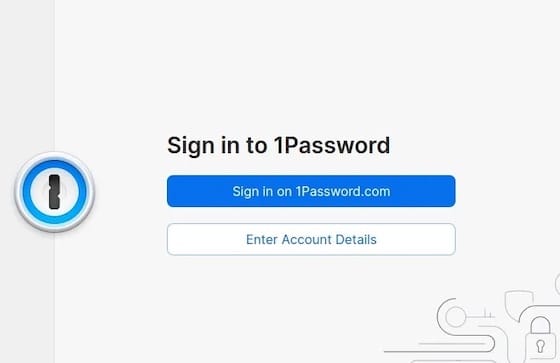How To Install 1Password on Ubuntu 24.04 LTS

1Password has long been a favorite among macOS and Windows users, and now Linux enthusiasts can enjoy its full functionality. With the release of 1Password for Linux, Ubuntu users can benefit from a native application that offers enhanced security features, smooth integration, and a user-friendly interface.
Ubuntu 24.04, the latest Long Term Support (LTS) release, provides a stable foundation for 1Password. This password manager not only secures your login credentials but also offers secure note storage, credit card information management, and even a password generator to create strong, unique passwords for all your accounts.
Prerequisites
Before we dive into the installation process, let’s ensure you have everything needed to successfully install 1Password on your Ubuntu 24.04 system:
- A computer running Ubuntu 24.04 LTS
- Access to the terminal (Ctrl + Alt + T)
- Sudo privileges on your account
- An active internet connection
- Approximately 100MB of free disk space
With these prerequisites in place, you’re ready to explore the various installation methods available for 1Password on Ubuntu.
Installation Methods Overview
1Password offers multiple installation options for Ubuntu users, each with its own advantages. Let’s briefly overview these methods before diving into the details:
- Official .deb Package: This method involves downloading and installing the Debian package directly from 1Password’s website.
- APT Repository Method: By adding 1Password’s official repository, you can install and easily update the application through Ubuntu’s package manager.
- Snap Package: While available, this method has some limitations and is generally not recommended unless the other options are not viable.
We’ll explore each of these methods in detail, providing step-by-step instructions to ensure a smooth installation process.
Method 1: Installing via .deb Package
The .deb package installation is straightforward and ideal for users who prefer a direct download approach. Follow these steps to install 1Password using the official .deb package:
- Open your web browser and navigate to the official 1Password download page for Linux.
- Click on the download button for the .deb package.
- Once the download is complete, open your terminal (Ctrl + Alt + T).
- Navigate to your Downloads folder:
cd ~/Downloads - Install the package using the following command:
sudo dpkg -i 1password-latest.debReplace “1password-latest.deb” with the actual filename if different.
- If you encounter any dependency issues, run:
sudo apt install -fThis command will install any missing dependencies.
After installation, 1Password will automatically add its repository to your system, ensuring you receive future updates through Ubuntu’s package manager.
Method 2: APT Repository Installation
Installing 1Password via the APT repository is the recommended method for most users. It ensures easy updates and better integration with Ubuntu’s package management system. Here’s how to proceed:
- First, add the 1Password GPG key to your system:
curl -sS https://downloads.1password.com/linux/keys/1password.asc | sudo gpg --dearmor --output /usr/share/keyrings/1password-archive-keyring.gpg - Add the 1Password repository to your sources list:
echo 'deb [arch=amd64 signed-by=/usr/share/keyrings/1password-archive-keyring.gpg] https://downloads.1password.com/linux/debian/amd64 stable main' | sudo tee /etc/apt/sources.list.d/1password.list - Update your package list:
sudo apt update - Install 1Password:
sudo apt install 1password
This method ensures that you’ll receive automatic updates for 1Password alongside your regular system updates, keeping the application secure and up-to-date.
Method 3: Snap Package Installation
While not the primary recommended method, installing 1Password via Snap is an option for users who prefer this package format or have restrictions that prevent using the other methods.
To install 1Password as a Snap package, use the following command:
sudo snap install 1passwordHowever, be aware that the Snap version may have limitations compared to the .deb version, such as:
- Potential issues with system integration
- Slower startup times
- Limited access to system resources
For the best experience, stick to the .deb package or APT repository methods unless you have specific reasons to use the Snap version.
Post-Installation Setup
After successfully installing 1Password, it’s time to set up your account and configure the application. Follow these steps for a smooth initial setup:
- Launch 1Password from your applications menu or by typing
1passwordin the terminal. - On first launch, you’ll be prompted to create a new account or sign in to an existing one.
- If creating a new account:
- Choose a strong master password
- Set up two-factor authentication for added security
- Create your first vault to store passwords
- For existing accounts, sign in using your account details and secret key.
- Once logged in, you can start adding passwords or import existing ones from other password managers or browsers.

Features and Integration
1Password on Ubuntu 24.04 offers a range of features designed to enhance your password management experience:
- Dark Mode Support: Seamlessly integrates with Ubuntu’s system-wide dark mode for comfortable viewing in low-light environments.
- GNOME Integration: Enjoy native-like integration with the GNOME desktop environment, including system tray functionality.
- Browser Extensions: Install 1Password extensions for Firefox, Chrome, and other popular browsers for easy access to your passwords while browsing.
- Biometric Authentication: If your device supports it, set up fingerprint authentication for quick and secure access to your vault.
- Secure Document Storage: Store sensitive documents, such as passports or licenses, securely within 1Password.
Troubleshooting Common Issues
While 1Password installation is generally smooth, you might encounter some issues. Here are solutions to common problems:
Repository Errors
If you encounter GPG errors when updating, try refreshing the key:
sudo apt-key adv --refresh-keys --keyserver keyserver.ubuntu.comInstallation Failures
For dependency issues, ensure your system is up-to-date:
sudo apt update && sudo apt upgradeIntegration Issues
If browser extensions aren’t connecting, restart your browser or check if the 1Password app is running in the background.
Authentication Problems
For login issues, verify your internet connection and ensure your account details are correct. If problems persist, contact 1Password support.
Maintenance and Updates
Keeping 1Password updated is crucial for security and functionality. Here’s how to manage updates:
Automatic Updates
If installed via APT, 1Password will update automatically with your system updates. To check for updates manually:
sudo apt update && sudo apt upgradeManual Updates
For .deb installations, periodically check the 1Password website for new versions and download the latest .deb file to update.
Uninstallation Guide
If you need to remove 1Password from your Ubuntu system, follow these steps:
- For APT installations:
sudo apt remove 1password - For .deb package installations:
sudo dpkg -r 1password - Remove the repository (if added):
sudo rm /etc/apt/sources.list.d/1password.list - Clean up any leftover configuration files:
sudo apt autoremove && sudo apt autoclean
Security Considerations
While 1Password is designed with security in mind, consider these additional steps to enhance your overall security posture:
- Enable Two-Factor Authentication: Use 1Password’s built-in 2FA feature for an extra layer of security.
- Regular Backups: Export your vault data periodically and store it securely.
- Use a Strong Master Password: Create a unique, complex master password that you don’t use anywhere else.
- Keep Your System Updated: Regularly update Ubuntu and 1Password to patch any security vulnerabilities.
Congratulations! You have successfully installed 1Password. Thanks for using this tutorial for installing the 1Password password manager on your Ubuntu 24.04 LTS system. For additional help or useful information, we recommend you check the official 1Password website.